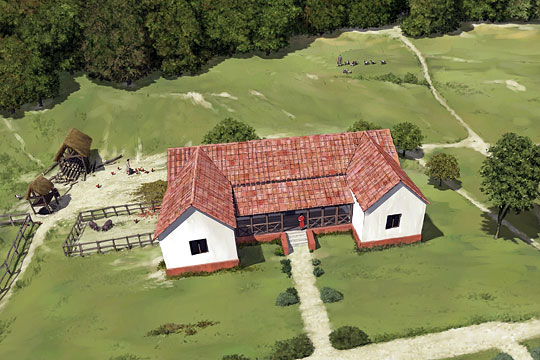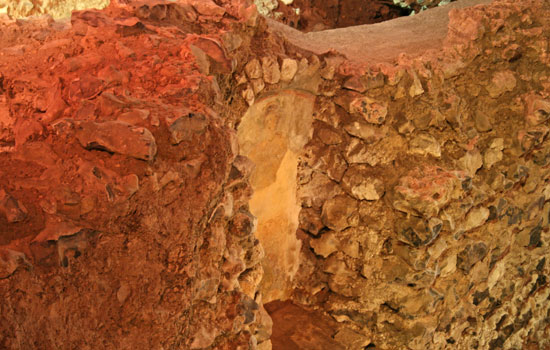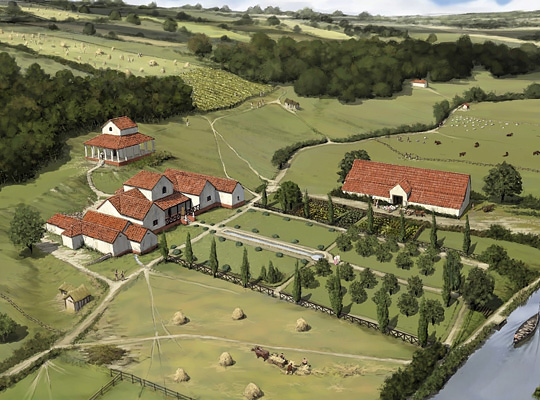What did the villa look like?
We know that Lullingstone Roman Villa developed over 400 years. During this time there were lots of changes to the main house and the buildings around it.
Click on the pictures below to discover how Lullingstone Roman Villa changed over time.
Evidence at the Villa
Click on the images below to find out more about evidence of Roman life at Lullingstone Roman Villa.
Explore the Collection
Take a closer look at some objects from the collection at Lullingstone Roman Villa using our 3D images.
What can historic objects tell us?
Industry, Crafts and Skills at the Villa
Click on the images below to find out more about the crafts and skills we can see at Lullingstone Roman Villa.
After the Romans
In the 5th century a fire damaged the building and the villa may have been abandoned. Useful building materials were taken from the villa to be used in other places. The Lullingstone site was occupied during the Saxon period and the Middle Ages. The Lullingstane Chapel was built over the top of the Temple Mausoleum. This was used until the early 15th century. There was also a medieval graveyard in the area.





























